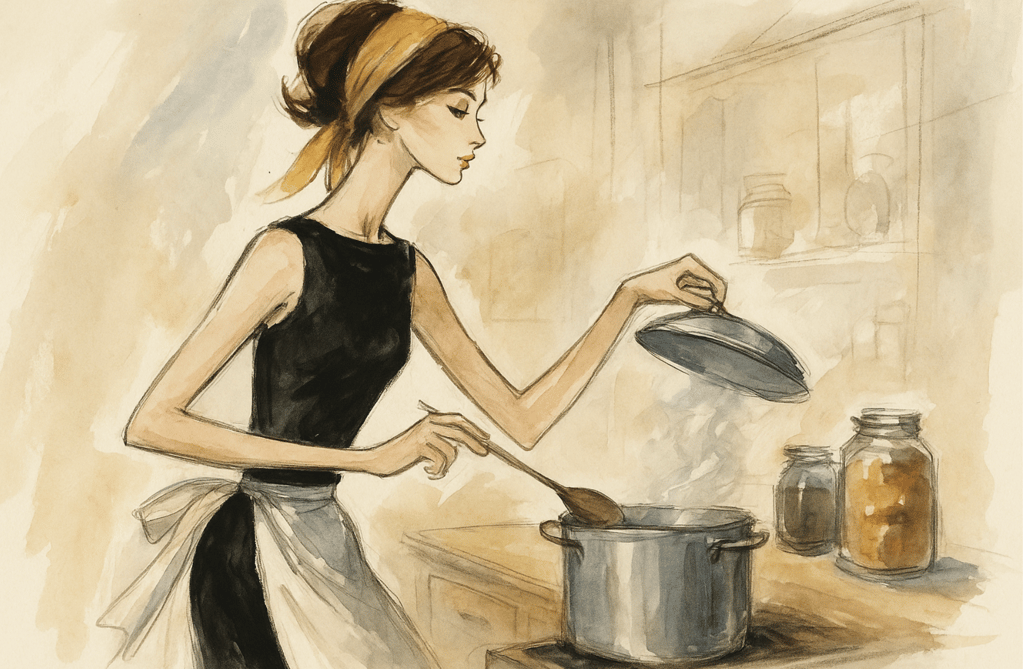Summer Preservation: Why Grandmothers Boiled Everything
Before refrigeration, boiling wasn’t just for flavour—it was survival. Discover why grandmothers boiled everything to preserve food and prevent botulism.
FOOD HISTORY & TRADITIONS


For many of us, the image is familiar: a grandmother or great-aunt, sleeves rolled up, standing over a steaming pot in the sweltering heat of July or August, boiling jars of fruit, vegetables, or pickles for hours on end. The kitchen feels like a sauna, every surface sticky with sugar, vinegar, or brine, and the air heavy with the scent of peaches, cucumbers, or tomatoes.
Today, summer preserving feels nostalgic or artisanal—a slow, old-fashioned craft. But for earlier generations, this wasn’t a charming pastime. It was a necessity. Before refrigeration, freezing, or reliable store-bought goods, boiling and sealing jars of summer produce was how families survived the leaner months. More importantly, it was how they kept those foods safe from something invisible—and deadly.
Why Boiling Was Essential: Botulism and Food Safety
The greatest threat in preserved foods wasn’t spoilage you could see or smell. It was botulism, caused by the bacterium Clostridium botulinum. In the low-oxygen environments of sealed jars, especially those containing low-acid foods like vegetables, this bacterium can thrive and produce a toxin so potent that a tiny amount can be fatal.
Even before science fully understood botulism in the late 19th and early 20th centuries, home cooks had learned through bitter experience that improperly prepared preserves could sicken—or kill—entire families. Boiling foods served a dual purpose: it killed most harmful microbes and created a high enough temperature to reduce the risk of botulism spores surviving.
Once the produce or brine was boiling hot, it was poured into sterilised jars, which were then sealed and often boiled again in large water baths. This process created a vacuum seal, preventing new bacteria from entering and allowing the contents to last for months without spoiling.
The Ritual of Summer Preservation
This was not easy work. Summer preserving meant long days of labour in stifling heat. Fruits had to be washed, peeled, chopped, and cooked into jams or chutneys. Vegetables needed blanching, brining, and often repeated boiling to ensure safety. Massive pots of water took ages to heat, and the rhythmic sound of jar lids “popping” as they sealed became the only reward for hours of steam and sweat.
Despite the exhaustion, preserving was an annual ritual for many households. Families planned their summers around harvests, with certain weeks set aside for strawberries, cherries, peaches, cucumbers, and tomatoes. Entire kitchens would be turned over to the task, every surface lined with cooling jars, rows of gleaming preserves slowly taking shape.
In rural areas, neighbours often worked together. Women would gather in one home to share the workload, exchanging tips, gossip, and stories while peeling bushels of fruit. In return, each family left with their share of the preserved bounty. These sessions were grueling but also social, transforming a necessary chore into a communal tradition.
Beyond Necessity: Preserving as Power
While the work was driven by survival, preserving also gave families a measure of control and security in uncertain times. A well-stocked pantry of jars meant the difference between scarcity and abundance in the depths of winter. It ensured children had fruit when fresh produce was months away and added variety to otherwise bland winter diets dominated by grains and root vegetables.
For many women, summer preserving was also a source of quiet pride. It showcased their skill, resourcefulness, and ability to stretch the family’s resources. The colourful rows of jars lining cellar shelves weren’t just food—they were a visible reminder of labour, care, and foresight.
Even after refrigeration became more common in the mid-20th century, many households continued the practice. Some didn’t trust freezers or preferred not to rely on electricity. Others simply found comfort in the tradition, passing recipes and techniques down as part of family heritage.
Fun Fact: Summer Preservation as a Social Event
While it was hard work, preserving season wasn’t always solitary. In many farming communities, families organised “canning bees” or neighbourhood gatherings, where groups worked together to process enormous quantities of produce. These events turned the sweaty, monotonous labour into something festive, often ending with shared meals and the satisfaction of knowing that everyone would leave with shelves stocked for the winter ahead.
Why This Tradition Still Matters
Today, many people return to canning and boiling not out of necessity, but as a way to connect to those traditions, reduce waste, or preserve seasonal flavours. Yet understanding the original purpose—the life-or-death need to prevent botulism and stretch harvests—gives the practice new weight.
What we now see as a rustic hobby was once the cornerstone of food security for entire families and communities. Every jar of jam, every pickle, every row of canned tomatoes represented not just taste, but safety and survival.
So, the next time you crack open a jar of homemade preserves, think of the generations who boiled everything—not because they wanted to, but because they had to. In those steaming kitchens, amidst the hiss of kettles and the pop of sealing lids, they preserved more than food. They preserved life itself.
